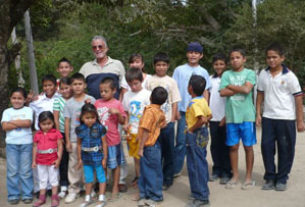The Cruz Roja Mexicana functions 24 hours a day, 365 days a year. Like the American and Canadian Red Cross, it assists at disasters, but additionally acts as an Emergency Medical Service. By Mexican law, it is the only organization, outside of big cities, authorized to render first aid to anyone injured in an auto accident or in the commission of a crime.
To understand how this came about, we must look at its history.
As early as 1898, the Spanish Red Cross approached the Mexican Government to inquire about the emergency services available in the Republic. At that time, such services were provided by the Mexican Army. The Mexican President, Porfirio Diaz, had been a general, had strong ties to the Military, and showed no interest in establishing a Mexican Red Cross. By 1907, however, the Mexican Army had fallen on hard times. Diaz, still President, had cut back on its funds, producing inefficiency and dissatisfaction among career officers.
On August 2nd of that year Mexico recognized the Geneva Convention and on February 21, 1910, a presidential decree recognized the Red Cross, but made it an auxiliary of the Army. In 1919, it was recognized by the International Red Cross and received a charter in 1923. Since then, the organization has been prohibited from accepting any financial aid from any government agency. It is financed by private donations only. It also severed its ties with the Army. Now, the Army gave up its role as the provider of day to day emergency care, shifting the burden to the Cruz Roja Mexicana. Thus, it became the sole designated caregiver in situations normally handled and paid for by governments in most parts of the world.
Today, both the Mexican Red Cross and the Mexican National Health Service, IMSS, maintain hospitals in all major cities. Larger cities also run Municipal Hospitals. However, the IMSS hospitals serve only those who can afford to pay a yearly fee of about $250.00 U.S. or work for companies that provide them with coverage. Those who cannot afford the premiums or are not covered by their employers, still must turn to either a Red Cross or Municipal Hospital for free care. By and large, emergency health care in big cities is good. That is not the case in small towns and villages.
Those who live outside large municipalities and are unable to pay for private care, are totally dependant on the Red Cross to provide emergency care and transport them to the nearest hospital that offers free service. At this time, there are over 418 delegations functioning within the country. More are needed.
Let us look at a Cruz Roja Mexicana operation in a smaller town. The Delegacion in Chapala, Jalisco, some 26 miles south of Guadalajara, serves about 130,000 people who live on both the North and South shores of Lake Chapala, and in towns in the mountains that surround the Lake. With perhaps the largest colony of Ex-pats, both American and Canadian, in Latin America and on a lake that serves as a magnet for weekend visitors from Guadalajara and tourists from all over the world, it handles a mind-boggling variety of medical emergencies in a 4000 square foot clinic. In addition to auto accidents and the rare violent crime, the geriatric nature of the ex-pat community, results in heart attacks, strokes, diabetic comas, plus a large number of broken bones and other injuries resulting from falls. Stings from scorpions and spiders, requiring immediate attention, are frequent.
The Clinic handles between 10 and 12 child-births a year. Although there are a number of privately owned clinic/hospitals in the area who advertise ’24 hr. a day Emergency Services,’ after 8 pm, their response to calls for help is slow. Only the Cruz Roja Mexicana has a doctor, a nurse and at least two trained paramedics on duty all night. With three ambulances, a defibrillator, pulseoxometer and an X-ray machine, normal procedure is to stabilize the patient and rush her or him to a hospital in Guadalajara.
The needs of the less affluent members of the community who have non-emergency medical problems, are handled in a free clinic that operates 6 days a week. It provides a consultation with a doctor and in most cases, free medications are dispensed. The Delegation requests a donation after the services are rendered, but what is received seldom cover costs.
Fortunately, the Delegation has two auxiliary groups. The Volunteers to Assist the Red Cross, largely non-Mexican and the Damas of the Cruz Roja, mostly Mexican ladies, run fund raising affairs that keep a monthly deficit under control, but just barely. Hopefully, as the Mexican economy improves, a Municipal Clinic will be established to share the burden now carried by the Cruz Roja Mexicana.
A safety net for all who live or visit here, the quality of life in this country, particularly in rural areas, depends on the ability of the Cruz Roja to collect enough money to keep solvent. Those who live here permanently, visit as snow-birds, or even pay short visits, must recognize that when they help support the Cruz Roja Mexicana, the life they help save may be their own.
For information about how to donate to, or to assist the Cruz Roja,

